Transportation Studio 4a
This course challenges students to conceive and propose a future vehicle design for a specific automotive brand and timeframe. Students will focus on creative- and critical-thinking methods that support storytelling, concept investigation and vehicle-design development. Through a series of weekly progressive sketches, students will create a 1/5-scale model using industrial modeling clay, tools and techniques. The course will provide the basis for learning automotive design process and theory, resulting in a finished, painted presentation model with related 2D renderings and concept story support work.
Interview with Transportation Design faculty member, Dennis Campbell, a beloved instructor and automotive designer whose 25-year career as a lead designer at Calty Design Research influenced the look of Toyota and Lexus vehicles, from the early 1990’s through the early 2000’s.
Related Links
Transportation Design Students at Work
This term, we’re doing 2050 Rolls-Royce project, which is interesting but hard to imagine. There’s a huge heritage behind Rolls-Royce, so we need to find the balance point of the design.
Gary LinTransportation Design student
ArtCenter: What inspired the direction you took with the curriculum for this class?
Dennis Campbell: I wanted to replicate, at the 4th-term level, the actual tasks, deliverables and conditions of a design studio within the automotive industry. A microcosm of sorts.
AC: What are some of the most important concepts and ideas you hope students take away from the experience/classwork?
DC: Translating dreams and visions through two-dimensional ideas (sketches and renderings) into three-dimensional automotive forms (clay models).
Understanding the attributes of automotive brands and projecting the DNA of those elements into future design thinking.
Increasing students’ tactile and visual understanding of automotive form, including stance, proportions, shape and line relationships and graphic elements.
Storytelling, including learning how to set the stage for communicating concepts, both visually and verbally, and the importance of "selling" your designs to your audience.
From the human side, respect for the corporate structure, the ability to work as an individual within a team, responsibility toward meeting homework deliverables and proper and professional presentation skills.


Revved Up: Women in Transportation Design Gain Momentum
AC: What are some of the assignments and materials you’ve incorporated into the curriculum that you hope will encourage and provoke students to challenge themselves and break new ground creatively?
DC: Utilizing simple materials, students explore abstract methods for creating original shape and form expressions in three dimensions. These shape studies are fed into Photoshop and manipulated into vehicle designs — it’s basically sketching in 3D.
AC: What do you think the importance and/or role of building models plays in an art and design education?
DC: In transportation design, the final product is a three-dimensional vehicle. Ideation sketching and rendering are the beginning steps that lead toward the development of a 3-dimensional model, whether physical or digital. The execution of the idea must be done in a model. Schools must provide, and students need to embrace, the opportunity to develop their ideas in model form. This is the way of the industry.
AC: What were some of the most interesting/surprising ways the students responded to the challenges and assignments?
DC: It's a difficult course and each student will respond to the term according to how they feel about their own abilities, some with confidence, some neutral and some apprehensive. But I'm always impressed by the way they pull it all together at the final presentations… as tired as they are!










